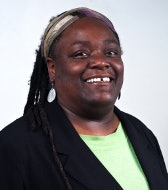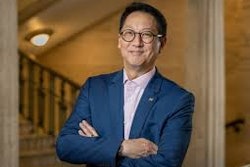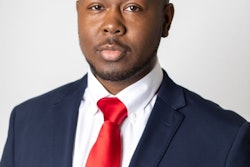 Dr. Dottie Morris
Dr. Dottie MorrisThe “generation gap” has always impacted how college administrators, faculty and staff relate to students. The zeitgeist of a generation will define how individuals will think about a social identity, including how gender is socially constructed. As a result, the way gender is perceived, defined and lived means different things to different people who are all brought together in places of higher learning with young students.
At many higher education institutions, gender is understood by administrators, faculty and staff, in terms of whether people are male or female—being gender nonconforming, gender benders, gender queer or transgendered has not entered into the range of possibilities for some. This is changing, but, to keep up with the change, it requires that faculty and staff members are actively engaged in this shift so that students can be successful and find their place during their college career.
Keene State College is like many liberal arts institutions across the country with faculty and staff representing a variety of generations. Approximately 52 percent are from the Baby Boomer generation, 34 percent are Generation Xers and 3 percent are Traditionalists; people who are over 70 years old. The majority of students—and about 11 percent of faculty and staff members—are Millennials.
On May 13, the Civil Rights areas of the U. S. Department of Justice and Education issued a joint “Dear Colleague” letter with guidance for supporting students who are transgendered. Though the recommendations are essential, the impact that generational differences will have on developing policies is not adequately addressed.
So what do we do to address this challenge? At Keene State College, we are addressing the issue through training, investing in meaningful dialogue and campus resources to help shift culture. All institutions need to have cross-generational discussions to 1) examine definitions of gender; 2) identify and acknowledge feelings about gender fluidity by administrators, faculty and staff rather than gender binary; 3) explore the impact their thoughts, feelings and beliefs will have on how and what policies are developed and implemented, behaviors expressed toward students who are transgendered and overall cultural shift needed to create; 4) obtain significant input from students about their lived experiences as students who are transgendered on their campuses; and 5) create a process to address the behavior of individuals who violate the expectations contained in the policies as determined by the college community. These five things will have an impact on the type of policies developed and the “spirit” under which these policies will be implemented.
Here are more specific suggestions for administrators, faulty and staff:
- Examine your own understanding of how you define gender and how this definition has shaped how you think about yourself and how this has had an impact on how you might engage with students who are transgendered or on developing policies.
- Educate yourself about how gender is defined and is part of students’ “lived experiences” on your campus.
- Engage in reflection to identify any areas where you might have a bias or might privilege students who ascribe to the prescriptive way you think about gender—work to uncover any explicit bias you might have.
- Examine policies, procedures and practices at your institution that might ascribe to the gender binary. Also, ask yourself what are the practices of the organizations and businesses connected with your institution such as vendors, internship placements, community service, study away environments, etc. related to treatment of individuals who are transgendered?
- Revise classroom material to reflect a more inclusive and generationally consistent ways of examining gender beyond the gender binary.
- Develop a culture of care, mutual respect and openness, rooted in equity.
- Develop an intentional system on campus to discuss and respond to issues as they arise. Be sure to notify the campus of this process.
- As we have on our campus, develop a strong and present cross-campus “Safe Space” program. Also, use of restorative circles can be helpful with clearly articulated guidelines for purpose, process and outcomes.
- Conduct an assessment of the language used in trainings/workshops, publications, forms and applications. Recommend having discussions about Free Speech and Academic Freedom rights and limitations and the spirit of creating community, not merely prescribing words to use.
- When in doubt, ask for advice.
This is an opportunity to reflect on our own perceptions and gain an understanding that will help future generations.
By Dr. Dottie Morris, chief officer of diversity and multiculturalism at Keene State College.


















